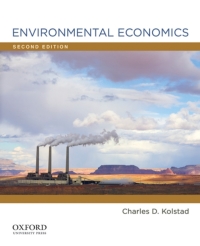Consider the twin communities of Tuckerville and Matildastan. These are seaside resorts that neighbor each other and
Question:
Consider the twin communities of Tuckerville and Matildastan. These are seaside resorts that neighbor each other and attract many tourists. Matildastan wants to raise some money to clean up the streams in town; their approach to this is to levy a "bed tax"-a per night tax on every visitor to a hotel. There are 3,500 hotel rooms in Matildastan and 1,500 hotel rooms in Tuckerville. The rooms are identical and tourists do not really mind which town they stay in. There are no other nearby towns.
The variable cost of providing a hotel room (electricity, maid service, other labor costs, etc.) is \(\$ 30\) per room: \(\$ 20\) for labor (maids, clerks, etc.) and \(\$ 10\) for nonwage expenses like electricity. (Labor and electricity prices are set in a larger, regional market.) About the only cost for hotel managers is building construction and maintenance costs, including mortgage payments (costs that are independent of the number of rooms rented). The (linear) demand is such that at a price of \(\$ 100\) per room, demand is for 6,000 per day. If the price goes to \(\$ 200\), the demand would be cut in half. Assume the bed tax is \(\$ 10\) per room per night in Matildastan only.
a. Identify the groups of people who might be positively or negatively impacted directly by the tax (not by the cleanup). Include tourists, hotel owners, workers, others.
b. Identify the groups of people who might be positively or negatively impacted directly by the cleanup. Include tourists, hotel owners, workers, residents of Matildastan, and others. Discuss the nature of their impact.
c. Show graphically the effect of a \(\$ 10\) tax on beds covering both communities on prices of hotels. This involves showing the supply of hotel rooms as well as the demand. Be as accurate as possible, using as much of the preceeding information as you can.
d. Show graphically the effect of the \(\$ 10\) tax on beds in Matildastan (no tax elsewhere) on the price of hotels in Matildastan (compared to no tax).
e. In terms of the direct incidence of the tax (i.e., excluding the benefits of stream cleanup), identify who ultimately pays for the tax. Try to be as quantitative as possible and support your arguments.
Step by Step Answer:






